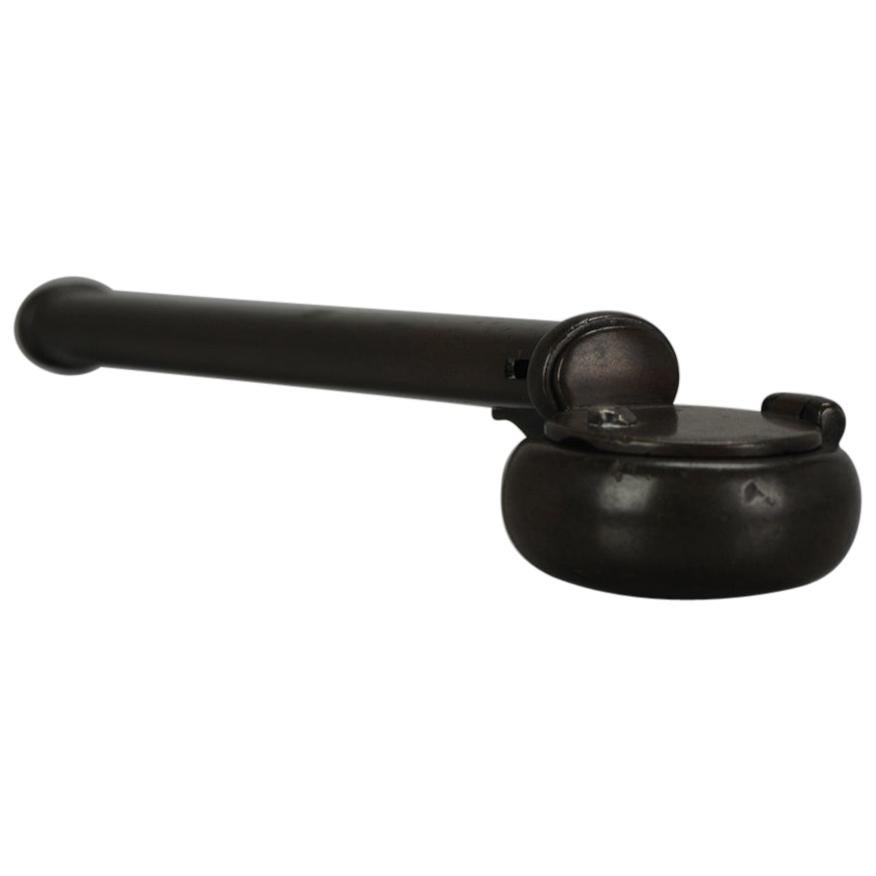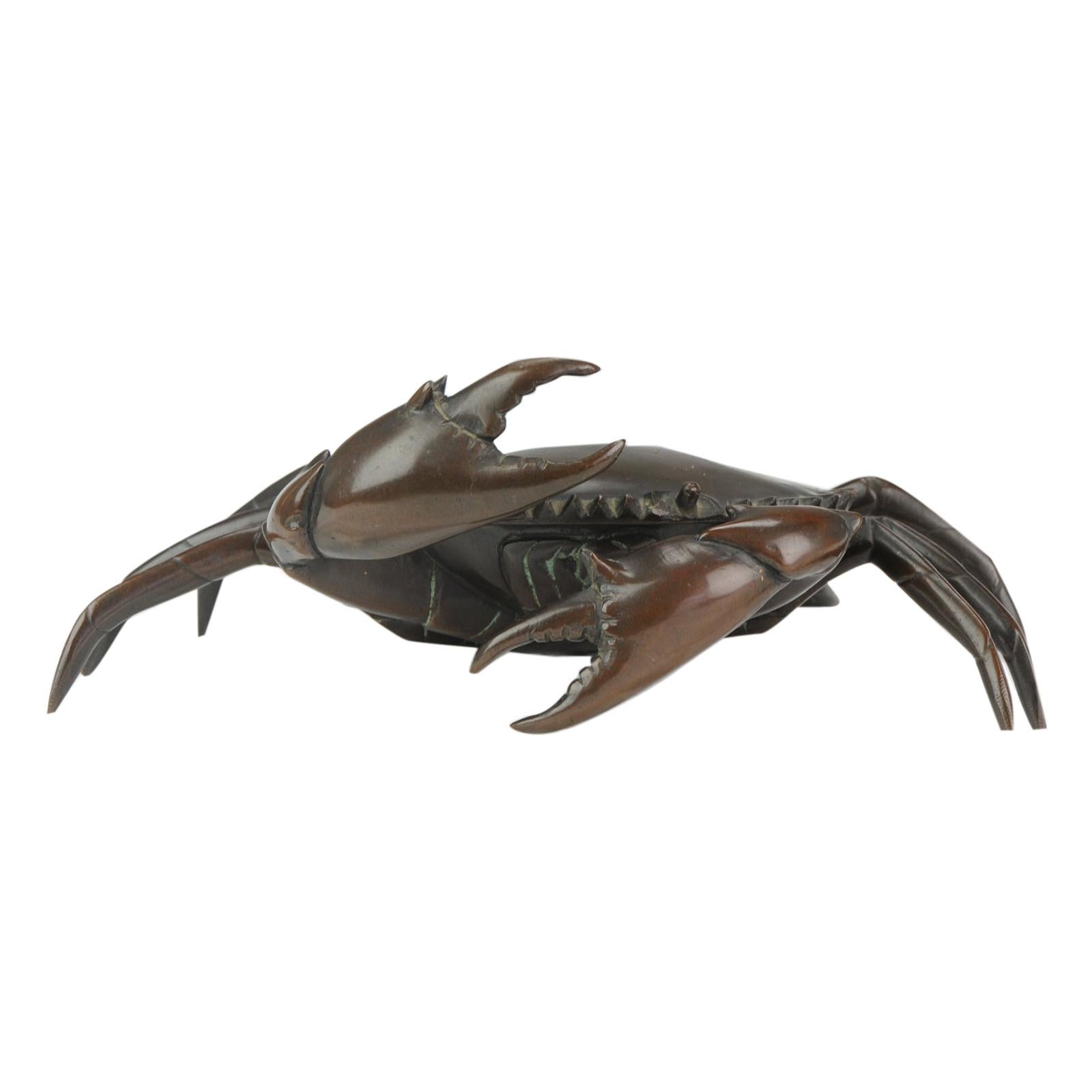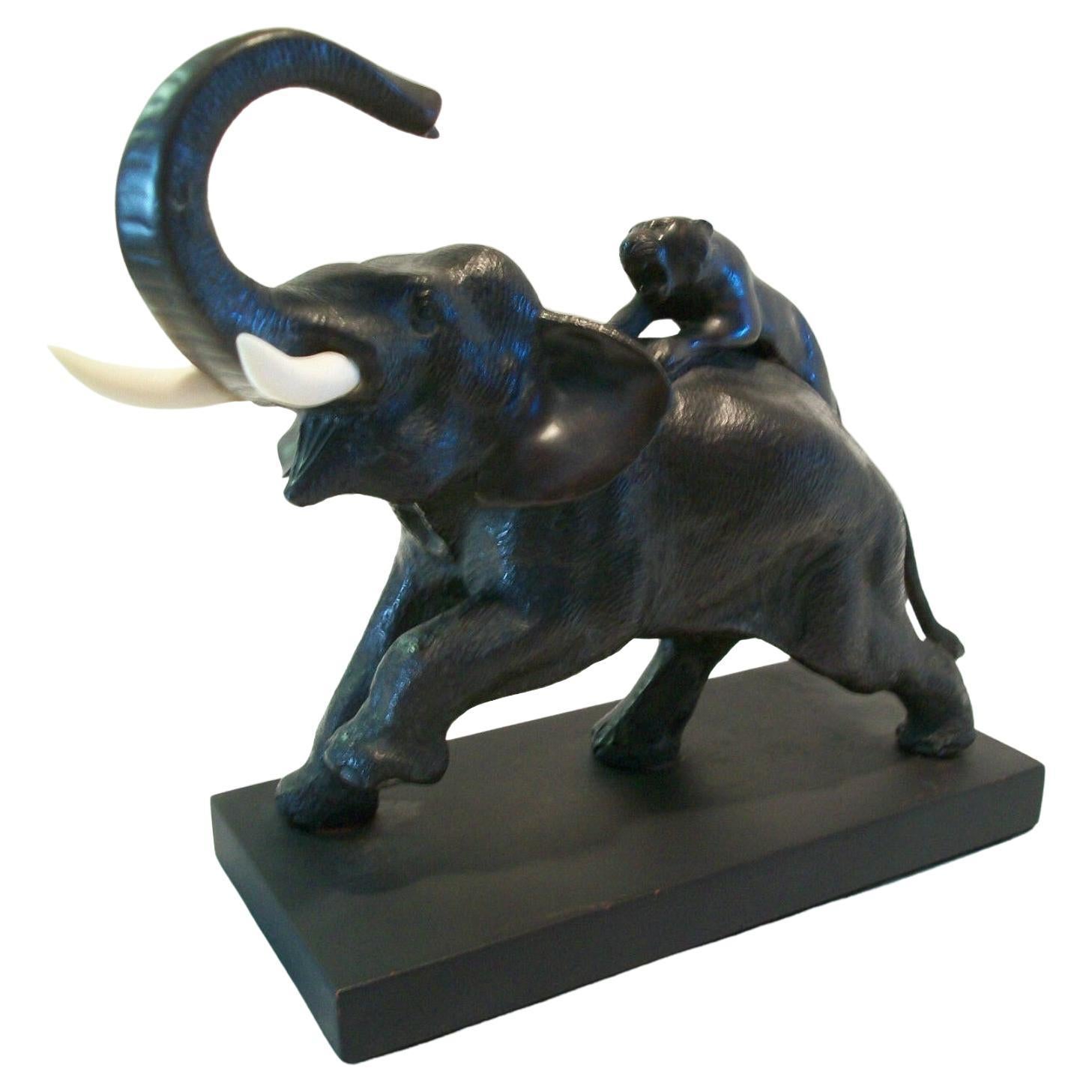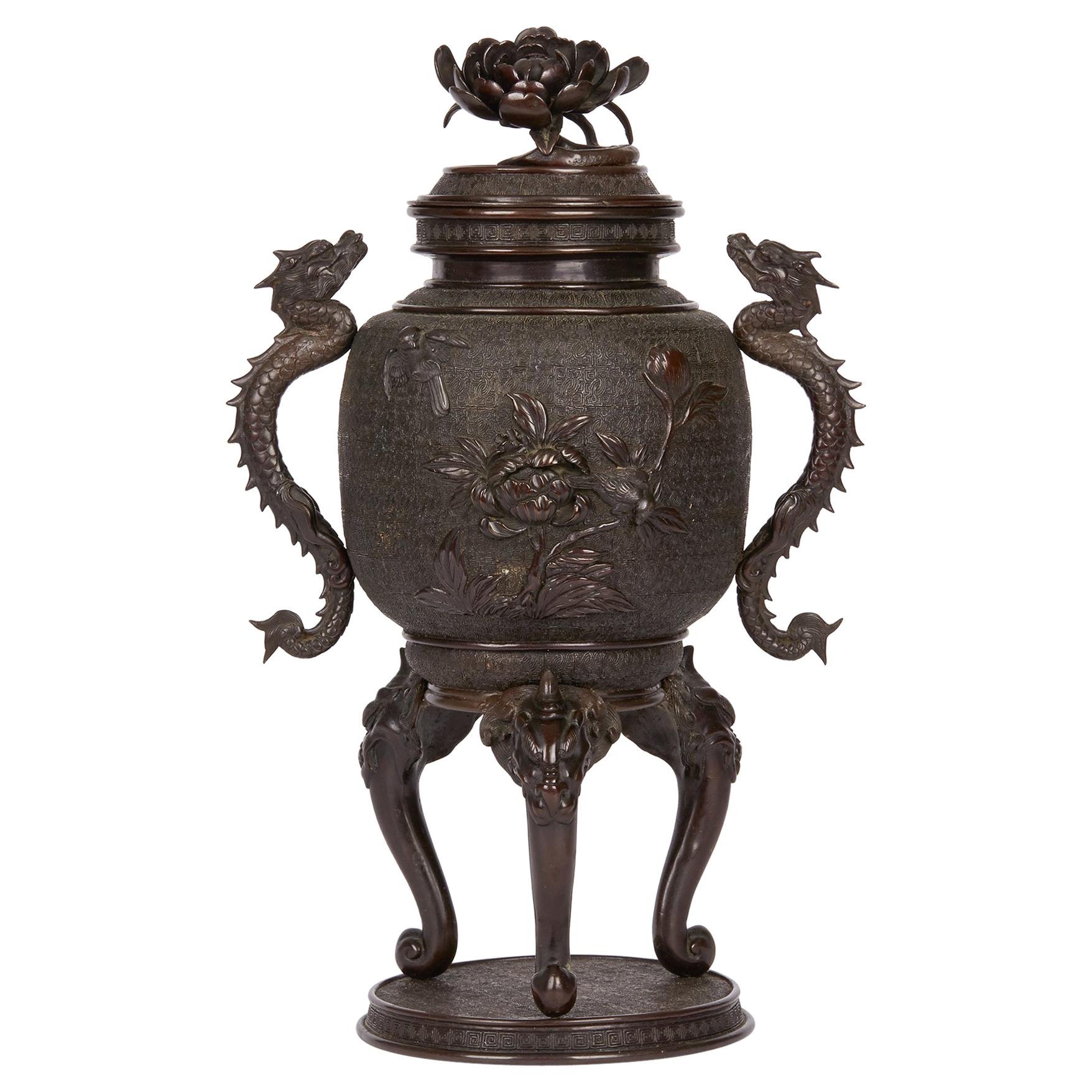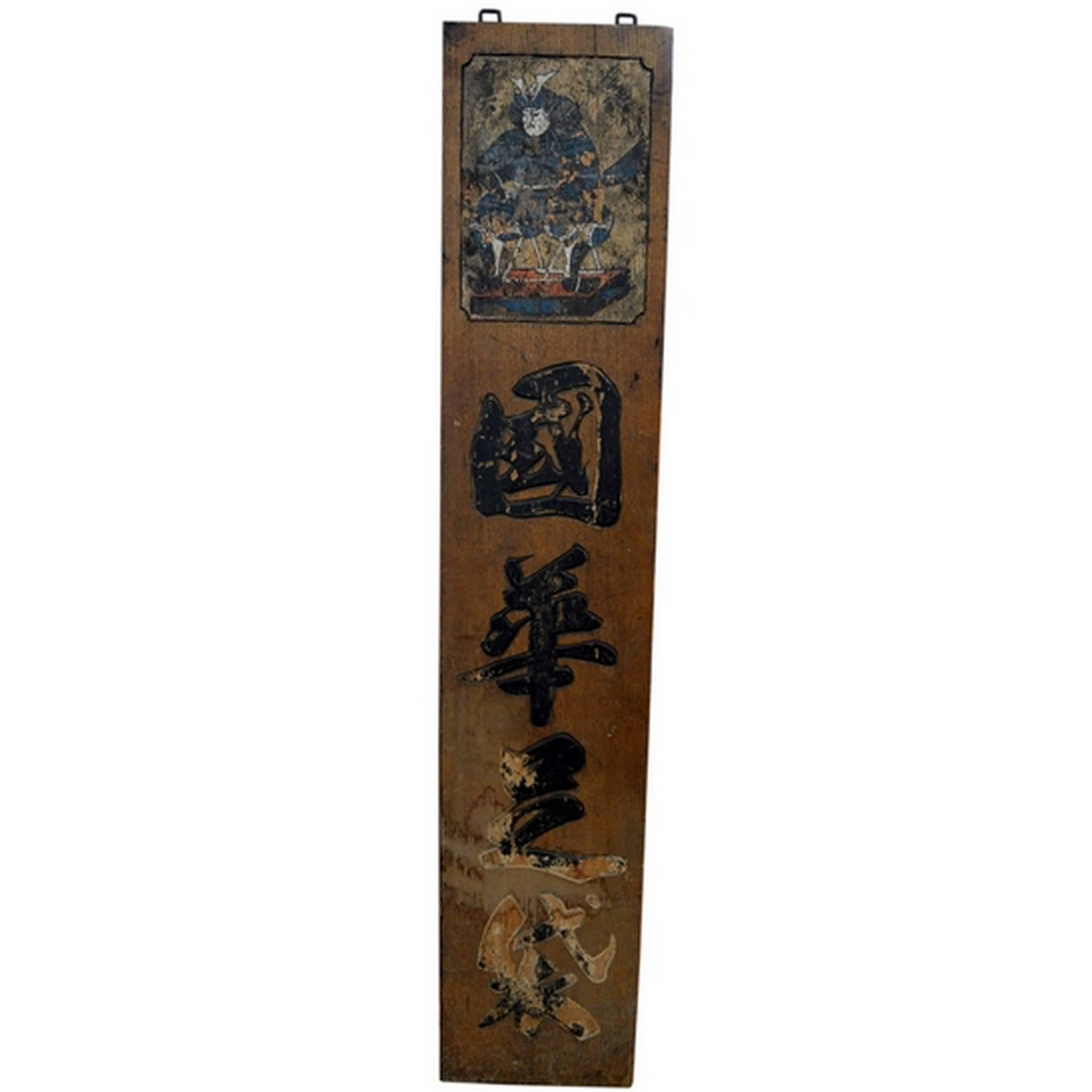Items Similar to Antique Japanese Bronze Hatate 19th C Meiji Inkpot Japan Unsigned
Want more images or videos?
Request additional images or videos from the seller
1 of 11
Antique Japanese Bronze Hatate 19th C Meiji Inkpot Japan Unsigned
About the Item
Lovely and very detailed piece. .
If someone were to bring up the topic of Japanese antiques, what images would come to your mind? Kimono? Swords? Armor? Possibly netsuke? A few might even know what an inro is. How about the yatate?
I have shown a yatate to many of my Japanese acquaintances here in Tokyo, and was surprised to discover that most did not even know what it was! Artists and calligraphers usually knew right away, though.
A yatate (pronounced yah-tah-teh) is a Japanese portable writing set. The yatate has been around since the Kamakura period (1185-1333). It contains a traditional Japanese bamboo brush and an ink pot filled with cotton or silk which holds liquid sumi ink.
Yatate literally means "arrow Stand."
The Japanese traditional way of writing is with a brush (fude) and ink (sumi). Before the invention of the yatate, whenever anyone wanted to write or draw in ink, he had to make his own ink by grinding the ink stick in water on the grinding stone (suzuri). This method has been used for many centuries, and is still being used today.
Warriors (samurai) often had to write letters and reports from the field, and so carried a small grinding stone in a small drawer at the bottom of their quiver along with the arrows.
This grinding stone became known as the "yatate no suzuri" (arrow Stand's grinding stone). Eventually it was simply called "yatate."
It was burdensome to have to pull out the grinding stone, ink stick, and water container every time one needed to write, but in those days before spill-proof containers, carrying liquid sumi ink could lead to disasters, especially on the battle field.
Then sometime during the Kamakura era (1185-1333 ) someone came up with the clever IDEA of saturating a piece of cotton or silk in liquid ink. This could be carried about in a simple container without any worry of spills.
A truly portable writing set was finally born. Now one could quickly dash off a letter by just sliding open the lid and pressing the brush into the cotton.
These new writing sets were made in the shape of a folded fan (hiogi-gata) which contained both the ink soaked cotton and brush.
Warriors continued to carry these in the quiver with the arrows, so they were also called yatate just like the grinding stones they replaced.
Condition
Overall Condition Very good condition, just some minimal age signs here and there like small scratches.180mm in length
Period
Meiji Periode (1867-1912).
- Dimensions:Height: 0.04 in (1 mm)Diameter: 0.04 in (1 mm)
- Materials and Techniques:
- Place of Origin:
- Period:
- Date of Manufacture:19th Century
- Condition:Wear consistent with age and use. Overall Condition Very good condition, just some minimal age signs here and there like small scratches.180mm in length.
- Seller Location:Amsterdam, NL
- Reference Number:1stDibs: LU4863222990482
About the Seller
5.0
Gold Seller
These expertly vetted sellers are highly rated and consistently exceed customer expectations.
Established in 2015
1stDibs seller since 2019
158 sales on 1stDibs
Typical response time: 11 hours
- ShippingRetrieving quote...Ships From: Amsterdam, Netherlands
- Return PolicyA return for this item may be initiated within 14 days of delivery.
More From This SellerView All
- Antique Japanese Bronze Hatate 19th C Meiji Inkpot Japan UnsignedLocated in Amsterdam, Noord HollandLovely and very detailed piece. . If someone were to bring up the topic of Japanese antiques, what images would come to your mind? Kimono? Swords? Armor? Possibly netsuke? A few might even know what an inro is. How about the yatate? I have shown a yatate to many of my Japanese acquaintances here in Tokyo, and was surprised to discover that most did not even know what it was! Artists and calligraphers usually knew right away, though. nk stick, grinding stone and bamboo brushes A yatate (pronounced yah-tah-teh) is a Japanese portable writing...Category
Antique 19th Century Japanese Sculptures and Carvings
MaterialsBronze
- Antique Bronze Meiji Okimono Inkpot of a Crab, 19th Century, Japan, JapaneseLocated in Amsterdam, Noord HollandNicely made artifact of a Crab in the use of an Inkpot. Okimono (??, oki-mono) is a Japanese term meaning "ornament for display; objet d'art; decorative object", typically display...Category
Antique 19th Century Japanese Sculptures and Carvings
MaterialsBronze
- Antique Bronze Vase Cloisonné Japan Meiji 19th Century JapaneseLocated in Amsterdam, Noord HollandAbsolute top Quality vase with superb decoration of flowers Cloisonné is a way of enamelling an object, (typically made of copper) whereby fine wires are used to delineate the dec...Category
Antique 19th Century Japanese Meiji Antiquities
MaterialsPorcelain
- Antique Okimono Bronze Japanese Statue of a Crab 19th C Meiji JapanLocated in Amsterdam, Noord HollandNicely made artifact of high quality. Condition No damages, just some ware due to age. Size 180mm wide 110mm depth 50mm high Period 19th century 20th century Meiji Perio...Category
Antique 19th Century Japanese Meiji Ceramics
MaterialsBronze
- Antique Bronze Meiji Vase with Cranes 19th Century Japan, JapaneseLocated in Amsterdam, Noord HollandDescription Nicely made vases with a great color shading Condition 1 piece has a missing base. Some small ware and age signs, nothing serious. Size 140mm high Period 19th ce...Category
Antique 19th Century Japanese Meiji Ceramics
MaterialsBronze
- Pair Antique Bronze Vase Cloisonné Japan Meiji 19th Century JapaneseLocated in Amsterdam, Noord HollandDescription Absolute top Quality vase with superb decoration of birds Cloisonné is a way of enamelling an object, (typically made of copper) whereby fine wires are used to deli...Category
Antique 19th Century Japanese Meiji Ceramics
MaterialsBronze
You May Also Like
- Antique Meiji Period Bronze & Bone Elephant Sculpture, Japan, 19th CenturyLocated in Chatham, ONAntique Meiji Period bronze and bone sculpture - dramatic fine casting of an elephant and tiger - mounted to an black painted wood base - unsigned -...Category
Antique Late 19th Century Japanese Meiji Sculptures and Carvings
MaterialsBronze
- Large Japanese Meiji Bronze Lidded Urn, 19th CenturyLocated in Bishop's Stortford, HertfordshireA large and stylish antique Japanese Meiji bronze lidded twin handle urn standing on a rounded plinth base with tongue and grotesque head formed legs with dragon handles and a flat c...Category
Early 20th Century Japanese Meiji Metalwork
MaterialsBronze
- 19th Century Japanese Bronze Lion Meiji Period on Wood Base SignedLocated in Hampstead, QCThis 19th Century bronze male lion is in very good condition. No significant damage to the lion or its lacquered wood base. The left glass eye of the lion is missing. The joint where...Category
Antique 19th Century Japanese Meiji Sculptures and Carvings
MaterialsBronze
- Antique Japanese Meiji Period Painted Wood Sign with a Samurai, 19th CenturyLocated in Yonkers, NYA Japanese carved and painted wooden sign with a Samurai from the Meiji Period, 19th century. This 19th century sign with a samurai was made in wood and painted in Japan during the Meiji period. The narrow rectangular panel features a painted frame with a character depicted in the upper section, showcasing a seated samurai wearing his armour. The section below is adorned with four lightly carved and back painted calligraphies. This tall panel can be hinged thanks to two square buckles on the top. Made during the 19th century, this antique Meiji period painted wood sign...Category
Antique 19th Century Japanese Meiji Sculptures and Carvings
MaterialsWood
- Pair of Japanese Cast Bronze Figures of Niō, Meiji Period, Late 19th CenturyLocated in Austin, TXA well cast pair of Japanese mixed metal okimono figures of Buddhist guardians, known as Nio or Dharmapala, protectors of Buddhist faith, Meiji Period, Japan. The smiling bronze g...Category
Antique Late 19th Century Japanese Meiji Sculptures and Carvings
MaterialsBronze
- Japanese Meiji Bronze Sea-Hawk SculptureLocated in New York, NYA finely-cast large Japanese Meiji-period bronze sculpture of a sea-hawk with stretched-out wings, made in the 1880s. The eyes are gilded; both wings and the body of the hawk are det...Category
Antique 1880s Japanese Meiji Sculptures and Carvings
MaterialsBronze
Recently Viewed
View AllMore Ways To Browse
Traditional Japanese Furniture
Simple Japanese
19th C Bronzes
Japanese Cotton
Small Antique Bronze
Japanese Minimalism
Japan Minimal
Japanese Minimal
Japan Bronze Sculpture
Japanese Bronze Sculpture
Unsigned Sculpture
Antique Artist Stand
Lidded Japanese
Gold Carving Set
19th Century Unsigned
Japanese Bronze Sculptures
Antique Japanese Carving
Writing Japan
